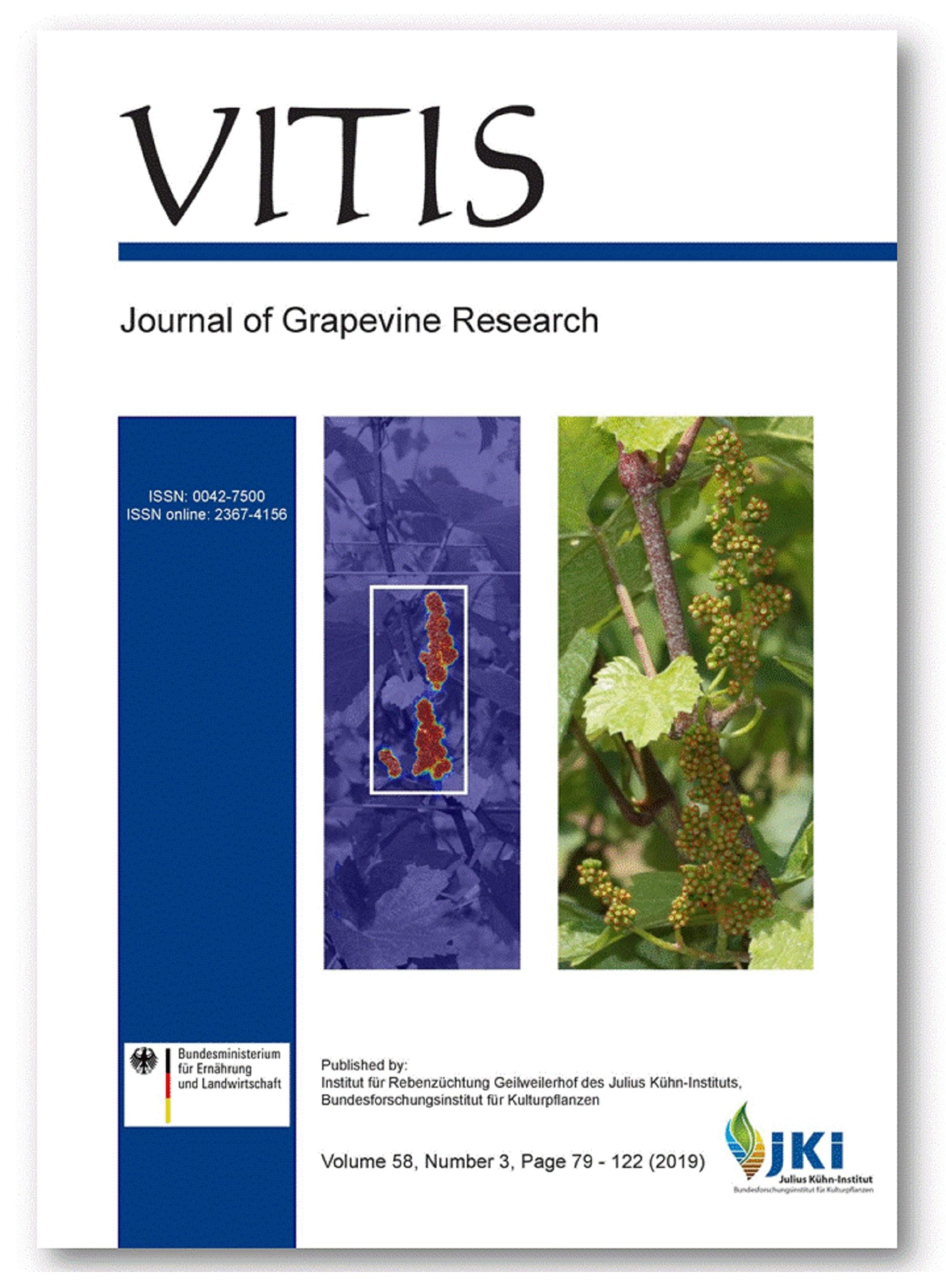Effects of living mulch on young vine growth and soil in a semi-arid vineyard
DOI:
https://doi.org/10.5073/vitis.2019.58.113-122Keywords:
cover crops; living mulch; vineyards; competition; soil properties; arbuscular mycorrhizal fungi; entomopathogenic fungi; soil borne pathogensAbstract
Although the use of under-trellis plants as weed control (living mulch) in vineyards has been gaining popularity, its effects on soil quality and especially soil biology have not been well studied. Due to functional trait differences, plants may differ in how they compete with vines, and may also change abiotic and biotic soil properties. A living mulch trial was established in the semi-arid Okanagan valley of British Columbia comparing vine growth as well as soil abiotic and biotic outcomes for four living mulch treatments: buffalo grass (Bouteloua dactyloides), Chewing's fescue (Festuca rubra ssp. commutata), birdsfoot trefoil (Lotus corniculatus), and shepherd's purse (Capsella bursa-pastoris) with two industry standards: herbicide and cultivation. After two seasons, strong vine growth responses were seen that depended on living mulch identity, e.g., reduction in leaf N status with grasses, reduction in leaf water potential with the legume, birdsfoot trefoil. These effects were related to plant-induced changes to soil C:N ratio and soil moisture. Although treatments did not change abundance of the measured fungal guilds in bulk soil, abundance of arbuscular mycorrhizal fungi in vine roots was lowest with birdsfoot trefoil as living mulch. This study may help growers to select living mulch species appropriate for the soil conditions and resource availability of their site.
Downloads
Published
Issue
Section
License
The content of VITIS is published under a Creative Commons Attribution 4.0 license. Any user is free to share and adapt (remix, transform, build upon) the content as long as the original publication is attributed (authors, title, year, journal, issue, pages) and any changes to the original are clearly labeled. We do not prohibit or charge a fee for reuse of published content. The use of general descriptive names, trade names, trademarks, and so forth in any publication herein, even if not specifically indicated, does not imply that these names are not protected by the relevant laws and regulations. The submitting author agrees to these terms on behalf of all co-authors when submitting a manuscript. Please be aware that this license cannot be revoked. All authors retain the copyright on their work and are able to enter into separate, additional contractual arrangements.



